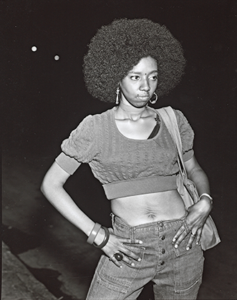Today’s post comes from Julian Ireland, Oberlin Class of 2019, and Art Center Docent.
During the slower days at the art center this summer, I found myself creating little activities to stay engaged with the art I was viewing. My favorite exercise is called the “Loeb Playlist,” in which the viewer (me) spends around 10-20 minutes looking at a work and thinking of a song it reminds me of. Depending on the viewer’s song memory or access to Spotify, they can compile a playlist that aligns with the mood, composition, or even the experience of observing specific works of art. As an example, I have matched a few of my favorite pieces with music that describes the way I personally view them:
For Agnes Martin’s The Harvest, I felt that “Requiem for Dying Mothers Pt. 1” by Stars of the Lid has a similar calm ambience while also emphasizing the starkness of Martin’s faint graphite lines.
Looking at The Seine at St. Cloud by Edvard Munch, it is like seeing Paris through a blue haze of sound and somberness, an effect which the impressionists called “nocturne.” Not only do all these elements come to life in Destroyer’s atmospheric “Bay of Pigs (Detail),” but even the lyrics themselves, about drunkenly walking alone through a city at night, seem to match the narrative behind Munch’s work.
The hectic and stimulating composition of Jean Dubuffet’s Site Agreste has a way of engrossing viewers in the madness of its large-scale canvas. For a song that has a similar power to engage while also confuse and disorient, I chose “Eight Cut Scars (For Robert Truman)” to accompany this piece.
https://youtu.be/P2j0bHVF8rc
Francis Bacon’s Study for Portrait IV, a work which deconstructs the elite and powerful image of the Pope to a grotesque view of the figure’s inner demons, corresponds hauntingly with the echoing choral samples and impending sense of doom in Blanck Mass’s “Silent Treatment.”
Among the less dramatic of the Hudson River School Paintings, Aaron Shattuck’s The Upper Connecticut evokes the calm of a summer day in the countryside, the kind when time seems to dissipate into the balmy air. Brian Eno’s “By This River,” a peaceful ballad about two people along a river, captures this sentiment of timelessness on a literal and emotional level.
In Florine Stettheimer’s Natatorium Undine, themes from the Jazz Age and women’s independence blend into an energetic and imaginative party scene. In my mind, the soundtrack for this party includes “Since I Left You” by The Avalanches, a song immersed in nostalgia and the sounds of vacation, with lyrics about breaking free from bounds and finding a new world on the other side.
I encourage visitors to the art center to try this out for themselves and see how their own interpretations translate into music. Mixing various media with art, whether it be music, film, or poetry, has a way of bringing out new meaning in a piece and offers an additional template with which to experience art.






